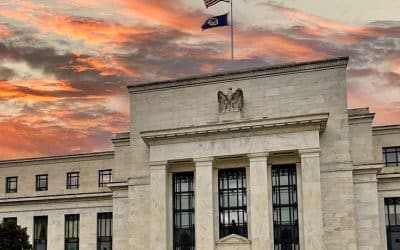Are you a conservative investor? We've got some low-risk tips for you

Redacción Mapfre
Amusement parks are not for everyone. Some people already feel dizzy watching a roller coaster. Those whose motto is “big excitement is not for me.” Well, there’s a similar phenomenon in the world of finance: there are investors who do not like to take on high risks. And yet it doesn't mean that they have to be left out of the “fun.”
In the investment landscape, there is a wide range of products whose main objective is to preserve capital, counteract inflation and even seek greater profitability. To achieve these goals, these investment products have lower volatility, and although they usually offer lower returns, they tend to beat inflation.
To do so, it is essential to understand the risk profile, choose fixed income products and guaranteed vehicles, diversify between different low-risk assets and monitor tax commissions and implications.
How do I know if I have a conservative profile?
Conservative investors are highly averse to uncertainty and willing to sacrifice higher returns in exchange for maximum security in the preservation of their capital.
To determine your degree of aversion, ask yourself questions like these:
- How would you react to a 5-10% drop in your investments?
- Do you need liquidity in the short term?
- What percentage of your assets are you willing to commit?
- What products fit the conservative investor profile?
Public Debt Instruments
associated with public debt are a good fit for conservative investors. In this case, the issuer is the government of a country, and it would be unlikely for them not to return the capital lent. On this point, it is more reliable to choose debt issued by the governments of countries with credit quality, such as those belonging to the European Union. However, it should be noted that although risk is low, it is not zero.
Government bonds offer a fixed coupon that provides periodic revenue and lower volatility compared to shares. In the context of low interest rates, it is advisable to prioritize short maturities to mitigate the impact of interest rate increases.
Public debt can be acquired directly through the primary market, i.e. official issues (e.g. Treasury Letters or Government Bonds) through the Bank of Spain or collaborating institutions, acquiring the title at the price and coupon set at the auction.
It is also possible to purchase them on the secondary market. These securities are traded between individuals on the stock market or organized market systems; in this case, their price fluctuates continuously according to the evolution of interest rates and the perception of risk, with both discounts and premiums being obtained on the face value.
This double track—primary and secondary markets—allows conservative investors to choose between the security of the initial rate or the potential to purchase at attractive prices on the market, always with the implicit guarantee of the sovereign issuer.
Fixed Income Funds
Fixed income funds are an essential pillar for conservative investors, as they invest mainly in debt assets issued by governments and high credit quality companies, which significantly reduces portfolio volatility. These funds can specialize in different segments, such as short- or medium-term government bonds, corporate bonds, or emerging markets, which allows you to adjust the risk level and duration of the investment according to your objectives.
Monetary funds
Monetary funds are investment vehicles that focus on short-term fixed-income assets, such as Treasury bills, bank deposits or promissory notes from solvent companies. Their main objective is to preserve the capital invested and offer a modest but stable return, with high liquidity. This makes them particularly attractive in environments of rising interest rates or for investors looking to park their money temporarily without taking on significant risk.
Their main advantages include low volatility and almost immediate availability of funds (daily liquidity in many cases). In addition, as they are managed by professionals, they provide access to a diversified portfolio of low-risk assets, making them an efficient alternative to traditional current accounts or deposits.
MAPFRE has recently launched its first monetary fund: Mapfre AM Eurocash, domiciled in Luxembourg. This fund is designed to offer daily liquidity and a return linked to the short-term Euribor, while maintaining a very low risk profile. With this initiative, MAPFRE is expanding its range of investment products for conservative profiles, responding to the growing demand for prudent and flexible solutions.
Guaranteed Funds
As their name suggests, guaranteed funds offer a guarantee. They ensure at least the initial capital if the investment is maintained up to the maturity date, i.e. they guarantee the total or partial return of the money invested. In some cases, they also ensure a profit.
The importance of diversification, also in a conservative profile
Even in conservative portfolios, it is advisable not to concentrate exclusively on a single asset type. It is essential to distribute capital among different assets (such as the aforementioned bonds, deposits, fixed income funds, etc.) to limit exposure to any individual risk and to ensure a more stable preservation of equity.
By combining assets with different behaviors, for example, the low volatility of bonds and the immediate liquidity of interest-bearing accounts, the impact of occasional drops in a specific market is mitigated, promoting the overall stability of the portfolio.
Investments in different markets (Europe, the United States, Asia, etc.) and currencies must also be taken into account to mitigate local or currency risk.
For a conservative profile, including a small percentage of safe-haven assets (such as gold) can also be a good idea, as it provides an additional cushion in the face of scenarios with high uncertainty.
As a last tip, your portfolio should be reviewed at least twice a year. If market conditions change (rate hikes, changes in debt ratings), readjust weights to maintain the desired risk structure.
Whatever your risk profile, the most important thing is to have a financial expert who knows how to make the most of your finances. At MAPFRE, we have a team of financial experts, MAPFRE Gestión Patrimonial, who help investors find the options that best suit their objectives and needs.



